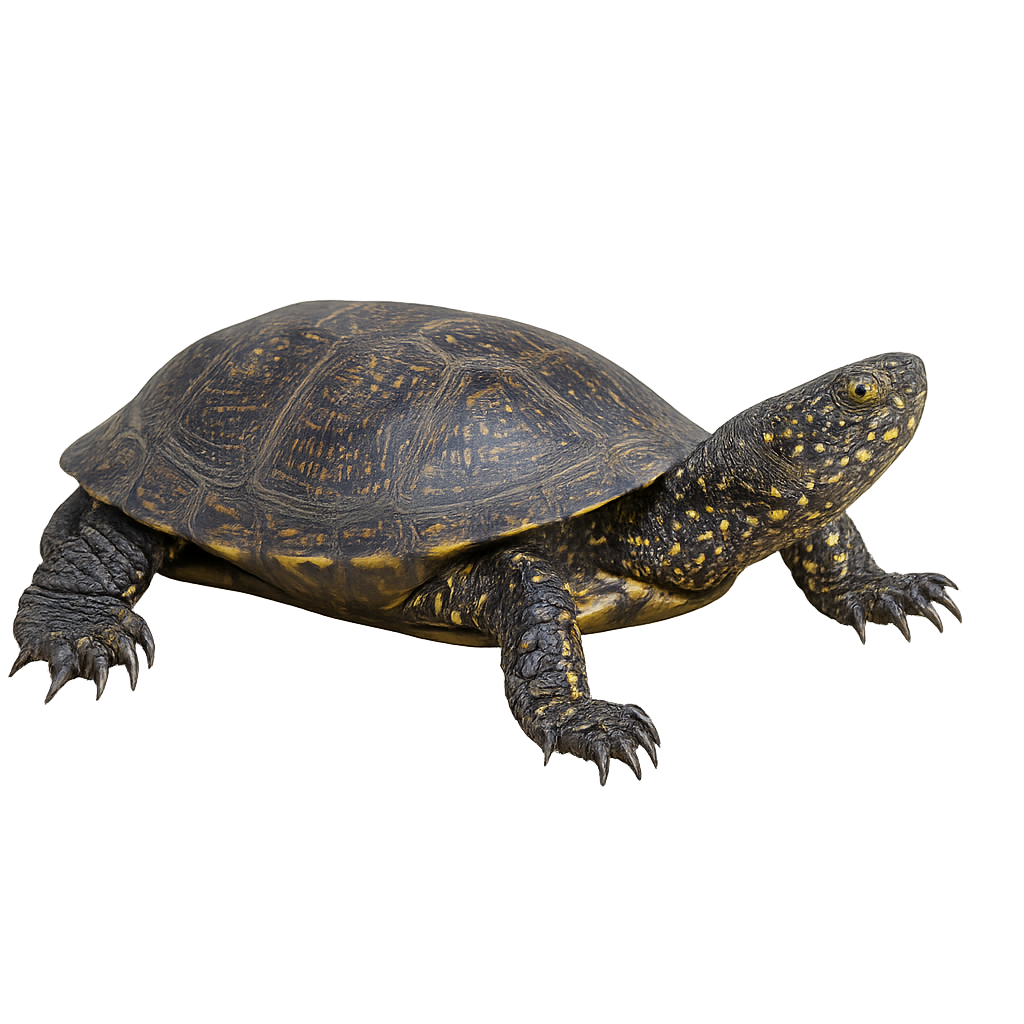Observe and photograph a species in its natural habitat
Learn where and when to observe a species in the wild, how to recognize it in the field, and what habitats it lives in. Get photography tips adapted to its behavior and capture stunning images without disturbing the animal. For full details, open the complete profile in the WildlifePhotographer app.
European Pond Turtle
Scientific name: Emys orbicularis

IUCN Status: Near Threatened
Family: EMYDIDAE
Group: Reptiles
Shyness: Suspicious
Safe distance: 30 m
Breeding season / Courtship: 15.04-15.06
Gestation: 80 à 110 jours
Births: 15.05-15.07
Habitat:
Stagnant or slow-flowing waters with dense vegetation
Description:
The European Pond Turtle is a medium-sized freshwater turtle, measuring between 12 and 20 cm in length. Its carapace is oval, slightly domed, dark brown to blackish, with yellow spots. The plastron is yellow with dark spots. The feet are webbed, adapted for swimming. This species inhabits stagnant or slow-flowing waters, such as ponds, marshes, and slow rivers, with dense aquatic vegetation. It is omnivorous, feeding on small aquatic invertebrates, fish, amphibians, and plant matter. Reproduction occurs in spring, with the female laying 8 to 10 eggs in loose, sunny soil. Incubation lasts about 80 to 110 days, with hatchlings emerging in late summer or the following spring. Listed as Near Threatened by the IUCN, the European Pond Turtle is protected in many European countries.
Recommended lens:
>=300 mm
Photography tips:
Use a telephoto lens to photograph the European Pond Turtle, especially during its sunbathing on logs or banks. Favor soft morning or evening light to capture the details of its carapace. Be patient and discreet to observe its natural behaviors.
Ready to take action?
Choose your platform and start your free trial today



